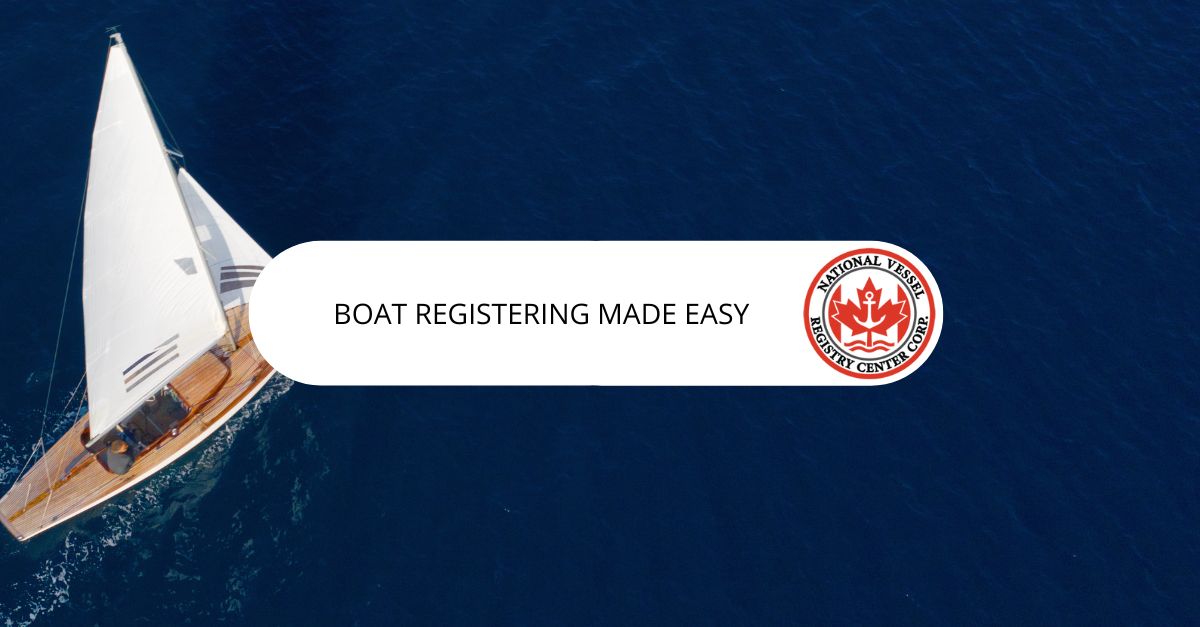You finally took the plunge and bought that new pleasure craft you’ve been dreaming about for years. Now it’s sitting in your driveway, gleaming in the sunlight, whispering sweet promises of lazy days on the lake and exciting adventures on Canadian waterways. Before you can shove off from the dock though, there’s the little matter of boat registering. Once you receive the registration for your new boat, you’ll be ready to set sail right away.
How to Register Your New Boat in Canada
First, gather the necessary documents like the bill of sale or dealer’s invoice to prove you actually own the vessel. Then check if your province has any special requirements, like an inspection.
Next, head to the Canadian Vessel Registry to get registered and to pay the applicable fees. You’ll need to have the specs of your boat – its size and type – model, serial number, and personal contact details. In return, you’ll get an authorization number that you can keep on board and display on your boat.
That’s it, you’re ready to cruise! Just don’t forget annual renewal fees, insurance, and keeping gear, like life jackets onboard, to stay safe on the waterways.
The open waters await, so drop your sails, batten down the hatches, and set a course for adventure. Just make sure you double-check that your registration numbers are properly displayed. The last thing you need is the marine police on your tail.
How to Display Your Boat’s Registration Number
To display the registration number on the exterior, you’ll need to make sure it’s a minimum of 10 cm or 4 inches in height. You need to mark the number on each side of the vessel’s hull along with the name and home port of entry.
Besides the two number displays on the outside, you’re required to include the number inside the pleasure craft. You’ll also need to permanently mark – affix or etch the tonnage. You can either paint the registration number or use a durable custom-cut vinyl cut-out number or letter. You can select from several fonts and sizes – ranging from the required 4 inches up to 10 inches in size.
Depending on where you live, you’ll wait two to four weeks on approval. Just remember: good things happen to those who wait, so don’t get impatient. At least, you can admire your boat in the meantime and dream of your upcoming adventures.
Ownership Documents
Collect your sales invoice, bill of sale, or receipt to prove you exchanged legal tender for your boat. Check with your local registration office to see what specifically they want. If buying from a private seller, be sure to get a bill of sale signed by both you and the seller, including the boat’s make, model, year, and serial number.
Registration may involve additional paperwork like a manufacturer’s certificate of origin to confirm your boat’s provenance. This proves it came from a legitimate boat maker.
You won’t jump through so many hoops, so to speak, if you register your boat online. The Canadian Vessel Registry is user-friendly – a place where you can handle all your licensing or registry needs at one convenient stop.
Just remember – registration is done for your protection. Proper registration helps deter theft, ensures your craft meets specific safety standards, and allows you to legally operate your boat in Canadian streams and lakes or along the coast. So gather your papers, take a number, and prepare for some new boating excursions.
Again, after your payment has been processed, your registration will be mailed to you within 10 to 15 business days. This includes your registration number, validation decals, and registration certificate which you must display prominently on your vessel.
All registration fees in Canada are non-refundable, even if you sell or trade in your boat down the road. Technically, the registration stays with the boat, not the owner.
Legal Boat Operation
Besides applying for the proper registration, you’ll also need to do the following if you wish to remain compliant:
- When registering, make sure you have the boat’s make, model, serial number, and personal details ready. You’ll need the bill of sale to show ownership.
- Obtain a pleasure craft operator’s card (PCOC). This card, which never expires, shows that you know how to operate a boat. By taking an affiliated boat safety course and passing the exam, you’ll be able to obtain the endorsement.
- Take note of the renewal date. You’ll need to renew your registration every three years and pay the proper fee.
- Buy boat insurance to protect your investment.
- Pay the taxes for moorage, HST, and PST, depending on where you live. Know what taxes are owed for your locale.
The requirements may seem tedious, but they help ensure safety and accountability for all seafarers, fisherpeople, and Canadian nature lovers all over Canada. A little time and money upfront is worth avoiding potential future legal troubles or accidents.
Online Boat Registering Made Easy
To make sure you’re properly registered, apply online at the Canadian Vessel Registry. Make sure you’re navigating your boat and staying legal on the waterways. Apply for a license or registration today.


